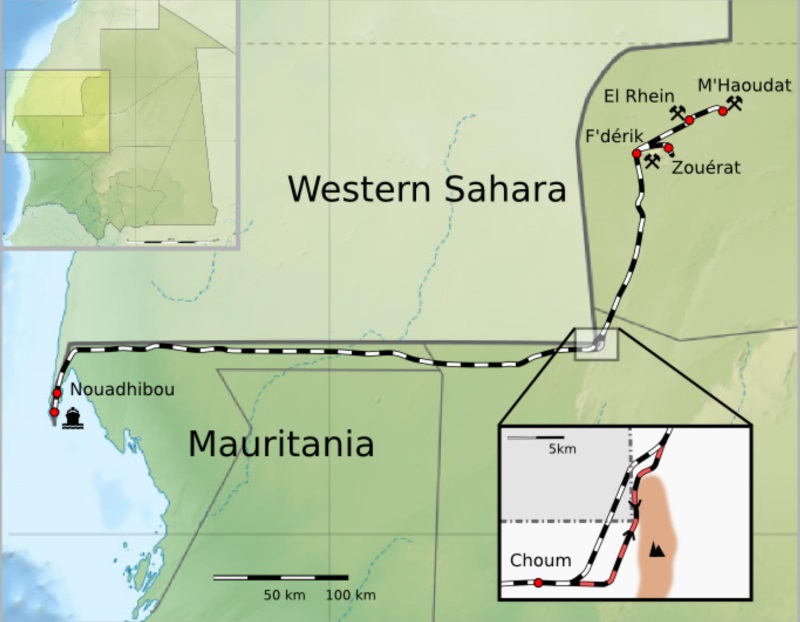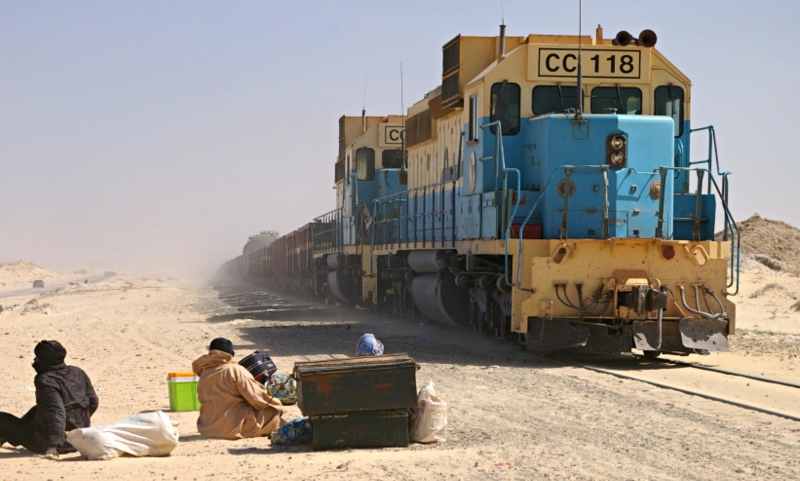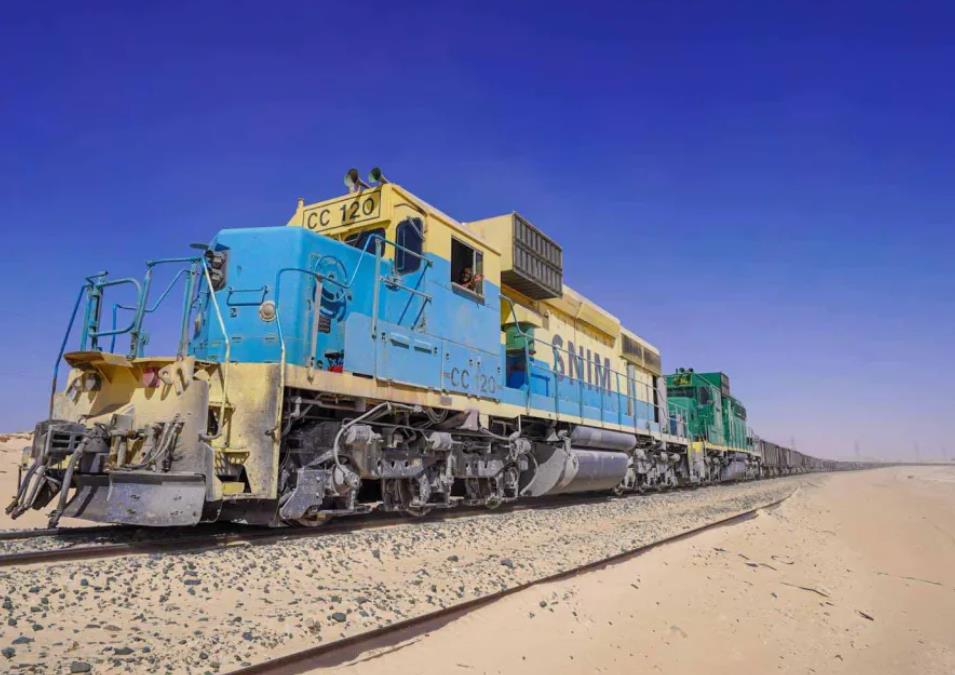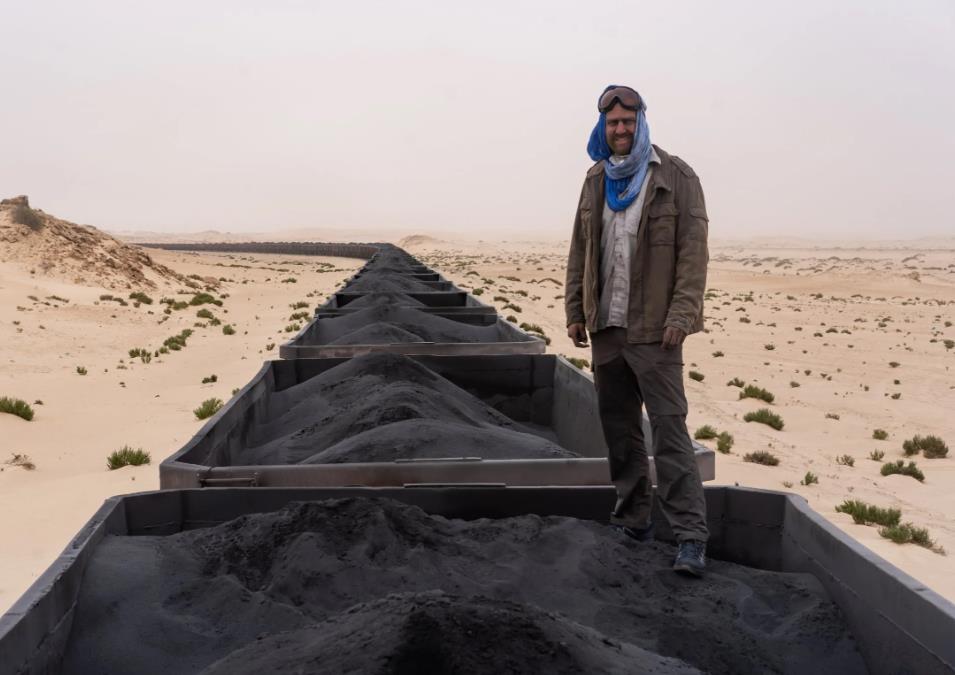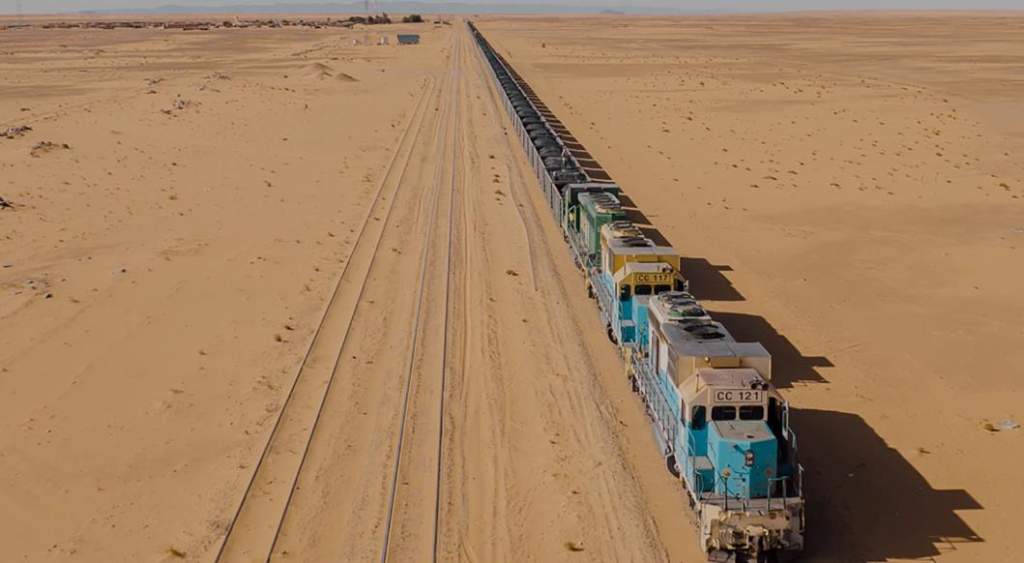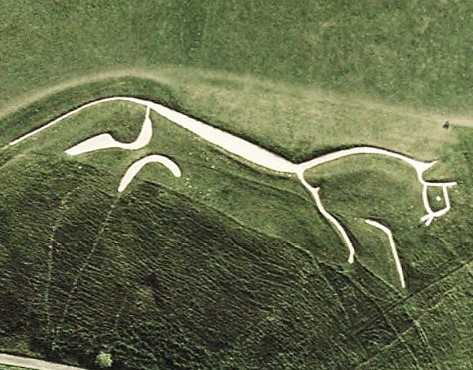Iron-ore Train Mauritania seems like a snake wandering in the desert. It is one of the longest and heaviest trains in the world and the most unique and incredible railway journey one can take. The famous Iron-ore Train looks like something out of a Hollywood action-adventure film as it snakes across the desert along Mauritania’s border with Western Sahara. The construction of the railway route began in 1960, and it opened in 1963. It consists of a single, 704-kilometer railway line that connects Zouérat, an iron mining town, to the port of Nouadhibou via Fderik and Choum.
The train is up to 3 kilometers (1.8 miles) long and travels on a single 704-kilometer (437-mile) track with 200–300 freight carriages weighing up to 84 tons. The train’s main purpose is to transport iron ore from the mining town of Zouerate to the Port of Nouadhibou via Choum in Mauritania, northwest Africa.
The state organization, Société Nationale Industrielle et Minière, allows citizens and visitors to board the train and travel between the country’s inland and seaside. However, one cannot expect the same level of comfort as on other passenger trains in the world. Traveling at 40°C is a challenging task, as this train lacks facilities. The train ride is in a particularly inhospitable location, with no directions or markers, and walking along it with all of the luggage and the numerous liters of water required for the 20-hour trek across the desert was not an appealing option.
Iron-ore Train Mauritania has no ticket, conductor, meal cart, or announcements. It is not subject to any timetable and may depart earlier or later than the regular departure hour. This also implies that the arrival time is not fixed, and a single trip can last anywhere from 11 to 15 hours in the sun at an average temperature of 40°C.
Most of the time, passengers just ride freely on the train. However, passenger cars are occasionally attached to freight vehicles. Locals, businesspeople, and occasionally adventure tourists make up the passenger list. These passengers endure extremely difficult conditions, with daytime highs of over 40 °C, nighttime lows close to freezing, and many fatalities from falls.
Related Reading: Hotel in a Real Train
